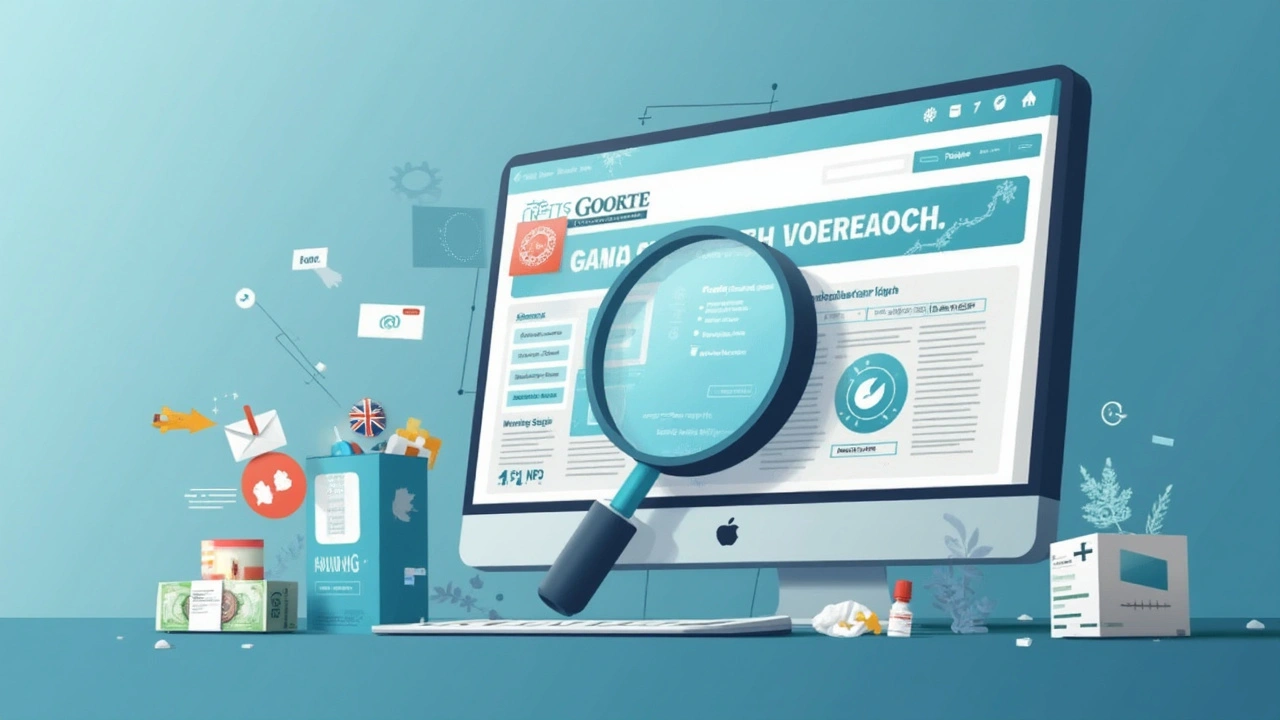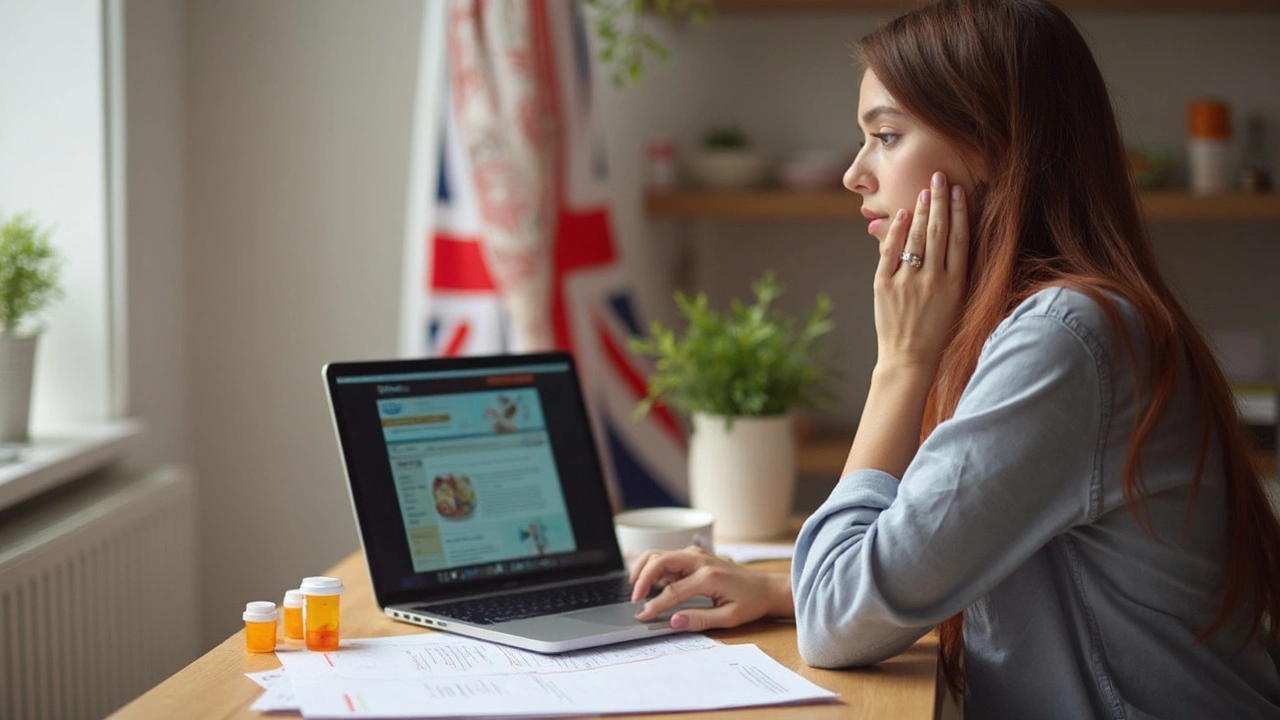Why Do You Need to Verify a Canadian Pharmacy?
Have you ever hesitated before entering your card details on a pharmacy site? It's not just paranoia. Online prescription drug sales have exploded, and so has the number of dodgy pharmacies—many hiding in plain sight with slick website designs and prices too good to be true. The major headache: not every Canadian online pharmacy is actually Canadian, or licensed, or even real. Some push knockoff meds. Others collect your info and vanish. And let's be real, nobody wants to gamble on their blood pressure pills, antibiotics, or kid's asthma inhaler. The last thing you'd want is to risk Isla or Archer getting a watered-down medicine just because someone designed a fancy-looking web shop. Core issue? Not all online pharmacies follow strict rules. Some don't require a prescription. Some never fill your order at all. The worst send fake pills—maybe packed with nothing but flour, or sometimes, harmful stuff that could actually land you in hospital. In Australia, we've heard plenty from friends and local forums about scammers running international "Canadian" shops. Surveys estimate maybe two-thirds of pharmacy sites selling globally are straight-up unlicensed. Drug safety isn't just a slogan for folks with chronic illness. It's about controlling your own health. So, careful verification is about peace of mind. If you've ever searched for ways to spot legit sites, this is exactly where proven tools and checks come into play.
What Are CIPA and PharmacyChecker, and How Do They Help?
Let's start with the biggest game-changers: CIPA and PharmacyChecker. CIPA, or the Canadian International Pharmacy Association, is basically the gold standard for verifying Canadian pharmacies. Members must meet strict safety rules, pass regulatory checks, demand valid prescriptions, and always ship from licensed premises. If a pharmacy has the CIPA seal, it's passed a lot of hoops. Don't just scan for the shiny logo, though—double-check the pharmacy's name on the official CIPA member list. There are fewer than 70 certified medsellers compared to the thousands pretending. PharmacyChecker's a bit different. It's an independent company based in the U.S., and it runs detailed verifications of online pharmacies from Canada and other countries. They look for business licenses, pharmacist credentials, origin of medications, and require a valid prescription. They issue ratings and track user complaints. What's smart about PharmacyChecker? They let you compare verified sites for price and trustworthiness, with transparency on location and contact info. But here's something most people miss: scammers often copy CIPA or PharmacyChecker seals and just stick them anywhere. That means you should never trust just the image—always check the official websites to make sure your chosen pharmacy is *really* listed. Some of the biggest PharmacyChecker-verified pharmacies openly show which country they'll ship from, how to upload a prescription, and include company histories. CIPA members are almost always based in Canada, ship Health Canada-approved meds, and don't sell narcotics. So, if you see suspiciously cheap "painkillers" or controlled substances being offered without fuss, something's off. It's an immediate warning sign. Remember, while these two agencies don't catch every scam, they're your strongest bet for a clean start. An unofficial stat floating through industry discussions suggests that 95% of the pharmacy scams you hear about come from sites outside the CIPA or PharmacyChecker networks—so these checks actually matter in day-to-day life.

Step-by-Step: How to Check a Canadian Pharmacy's Credentials Fast
The internet doesn't make this easy, especially when scammers are ahead of the curve. Here’s a clear, real-world workflow anyone in Sydney—heck, anywhere—can follow before clicking "buy." It’s just a few extra minutes for a lot less stress.
- Start with the website’s About or Accreditation page. Look for mention of CIPA or PharmacyChecker verification, a Canadian physical address, and actual pharmacy license numbers. Scroll down, don’t just stop at the homepage.
- Open the CIPA official member list. Enter the pharmacy's name exactly as displayed—watch for “Canada” or "pharmacy" swapped in for common typos, or fake names piggybacking on real ones. If they aren’t there, cross them off.
- Visit PharmacyChecker’s ratings page. Pop the pharmacy into their search. See if they’re listed as verified, unverified, or explicitly flagged as not recommended. If you spot any alerts or warnings, that’s a red flag right there.
- Check out Health Canada’s Drug Establishment Licensing database. This is more involved, but it’ll confirm if they’re even allowed to handle or ship meds within Canada. For the truly cautious, this is the gold mine.
- Quick Google the pharmacy name plus “scam” or “reviews.” Nobody’s invincible, and even the most careful sites sometimes have hiccups. So see alert forums, local news or Reddit threads, or comparison lists calling out scams, like this detailed guide that covers canpharm.com legitimacy. These user-shared insights often reveal patterns and traps you might miss on your own.
- Test customer service with a real question. Ask how they handle prescriptions, or where their pharmacists went to uni—legit operators answer promptly, provide documentation, and never get cagey about their details. If you get a cookie-cutter "your order will be shipped soon!" reply to everything, that's not good enough.
It’s tempting to shortcut all this with one tool, but cross-verifying between these resources creates a safety net. If any single check throws up a mismatch, stop—odds are someone’s faking something. Also: pharmacies that push for crypto-only payments, wire transfers, or try to dodge using traceable payment processors? Walk away. So many ordinary families end up with lost payments because the crooks keep moving their web hosts and bank accounts.
The Hidden Warning Signs and Smart Buyer Tactics
You'd think "no prescription required" or "miracle new treatment" banners would set off alarm bells, but some online pharmacies have gotten cleverer. Besides the big name checks, here are a few extra things to keep on your radar if you're determined to get your bottle of cholesterol meds or cough syrup safely through Australian customs, or just want to avoid fake-outs.
- Prices way below Canadian domestic rates. No online shop, not even the big guys, can ship prescription pills at a quarter of official prices. If it looks too cheap to be real, it probably is. Most Canadian pharmacies don’t do “first order 50% off” specials for obvious reasons.
- Check the "Contact Us" page. Does it have a real Canadian address and working phone? Try calling. If nobody answers, or you get a foreign accent with clear call center noise in the background, that's a huge warning sign. Canadian pharmacies are regulated—staff should sound professional and be happy to answer tough questions.
- Prescription upload process. CIPA and PharmacyChecker pharmacies both require prescription uploads, direct fax, or original mail-ins. If a pharmacy lets you just "self-certify" your prescription or doesn't care at all, they're sidestepping essential legal steps. Even for antibiotics or cholesterol meds, they’re never meant to bypass this.
- Check for valid Secure Sockets Layer (SSL) encryption. Simple trick: the web address should start with https://, not http://. No security, no money.
- Be wary of stunningly short shipping promises. No Canadian pharmacy can overnight pills to Sydney without delays at customs or Australian import restrictions. Watch for a realistic 2–4 week timeline, sometimes longer. Fast is a lie.
- Hidden customer policy pages. Can’t find refund, privacy, or data protection pages? That often means they have no intention of protecting your info anyway.
Lots of parents in Australia find Facebook groups and shared community lists surprisingly helpful. Ask for someone who's ordered recently, not last year—policies and site legitimacy change fast. In 2024, scam reports spiked after several large knockoffs cloned the branding of top Canadian pharmacies and sent emails with fake "special access" links. Community sharing saved a few mates hundreds of dollars.
Ever see a mystery charge on your bank account that wasn’t the right pharmacy name or country? That's a big deal. Each year, a handful of Sydneysiders lose cash to sites passing card charges through Russia or India, then going offline overnight. It's vital to keep an eagle eye on your card statement. From all the horror stories, the best advice? Never let your guard down—scams constantly evolve.
Here’s a quick snapshot of pharmacy verification stats as of November 2024:
| Verification Agency | Verified Pharmacies | Common Fake Seal |
|---|---|---|
| CIPA | Under 70 | Copied on 20,000+ scam sites |
| PharmacyChecker | About 120 globally | Imitated by most unlicensed operators |
The moral of the story for Sydneysiders and anyone shopping cross-border? No shortcut replaces personal vigilance. Laws change, scammers adapt, and your safest report card will always be a multi-tool approach—never a one-click plugin or a leap of faith.






Alfred Benton
April 26, 2025 AT 00:27